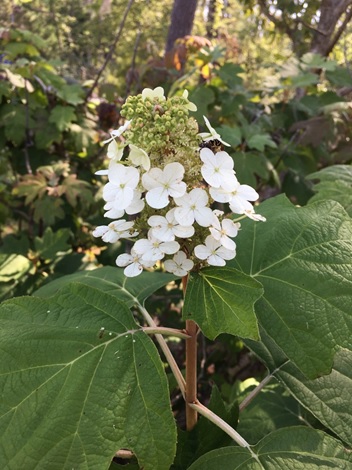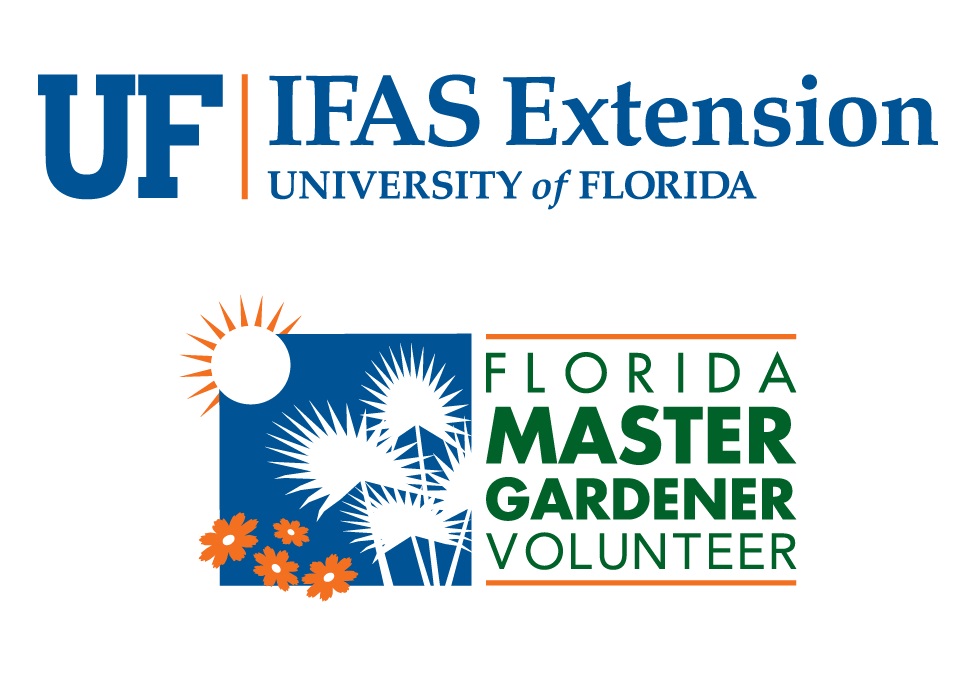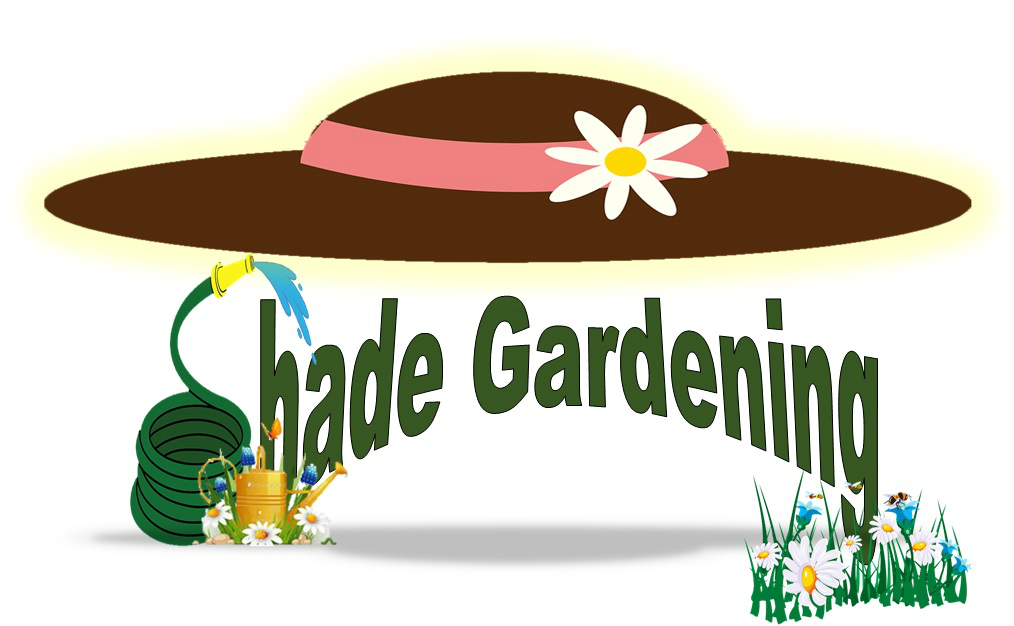Ask Master Gardener Volunteer JoAnn Green
Two lovely shrubs for part-shade are the American Beautyberry and Oak Leaf Hydrangea. Both plants grow to over 8 feet in height and width, so they need room to sprawl. Both plants would make a lovely addition to the natural landscape.
American Beautyberry
Callicarpa americana is a fast growing, North American native shrub that can be seen growing wild along many of our county roads. They are best identified in

late fall when the neon-purple berries can be seen from the street. These berries are the plant’s most outstanding feature. In the fall, I often add branches with the berries in arrangements of yellow, gold, or orange flowers for a nice contrast. I do make sure to leave some branches and berries on the shrubs for the birds, as the berries are a source of food during the winter months.
Beautyberries tolerate our well-drained, sandy soil. They do best in part shade to part sun and are moderately drought tolerant. The leaves are a light green and stand out against plants with darker colored leaves. In one of my beds I have a ground cover called Purple Heart as a companion plant for the Beautyberry and the contrast between the light green leaves of the beautyberry and deep purple of the Purple Heart is eye catching! (right photo)

American Beautyberries are deciduous and lose their leaves in the fall. While the leaves do turn yellow, they are not particularly showy. In January or February, I prune back the shrubs that are near the house and also in areas where their growth can hamper the person mowing the lawn in the summer. Pruning at this time ensures that the plants will flower in the spring so I can enjoy those lovely berries once again in the fall.
Oakleaf Hydrangea

Oakleaf hydrangea, Hydrangea quercifolia, is another native shrub that grows slightly taller than the American Beautyberry – over 10 feet tall with a spread of about 8 feet. This shrub has lovely white flowers in the late spring, that fade to pink, and then tan. They make nice large flower arrangements, if you like cut flowers in your home. The coarse textured leaves are another outstanding feature, especially in the fall when they turn a reddish purple.
Oakleaf hydrangeas prefer a rich moist soil, something I have to work on in my own landscape. When planting this
shrub, it is best you know your soil type and pH, as they do best in loamy and slightly acidic soils. The soil in my landscape is close to neutral, and mostly sandy. When planting, I make sure to dig a hole wider than the potted plant and add lots of organic material to the hole. I also maintain a nice layer of mulch around the shrubs to help keep the soil moist and on the acidic side.

I have to be careful as deer visit my yard quite frequently. They love to nibble on newly planted plants, and this year they found a newly planted Oakleaf hydrangea! So, my latest edition is now under a wire cage until it can become more established and get a bit larger. This extra bit of protection will be worth it in a few years.
I also learned to prune my Oakleaf hydrangeas in the summer, after they have bloomed. Not only will the pruning help the shrub become fuller, the pruning in
the summer will also help with larger blooms the next spring. Pruning in the late winter is okay, but your blooms will be much smaller.
For more details about this plant, check out the IFAS publication from the University of Florida: https://edis.ifas.ufl.edu/pdffiles/FP/FP09000.pdf
For more information about Oakleaf hydrangeas, here is a fact sheet from the University of Florida: https://edis.ifas.ufl.edu/pdffiles/FP/FP25900.pdf
I hope you will try one of these native shrubs in your landscape. We have lovely specimens of both plants at the Extension Office. Do come by to see them up close!
If you have any questions or suggestions for future articles please email to wakullamg@ifas.ufl.edu
| The Institute of Food and Agricultural Sciences (IFAS) is an Equal Opportunity Institution authorized to provide research, educational information, and other services only to individuals and institutions that function with non-discrimination with respect to race, creed, color, religion, age, disability, sex, sexual orientation, marital status, national origin, political opinions, or affiliations. U.S. Department of Agriculture, Cooperative Extension Service, University of Florida, IFAS, Florida A&M University Cooperative Extension Program, and Boards of County Commissioners Cooperating |
 0
0




